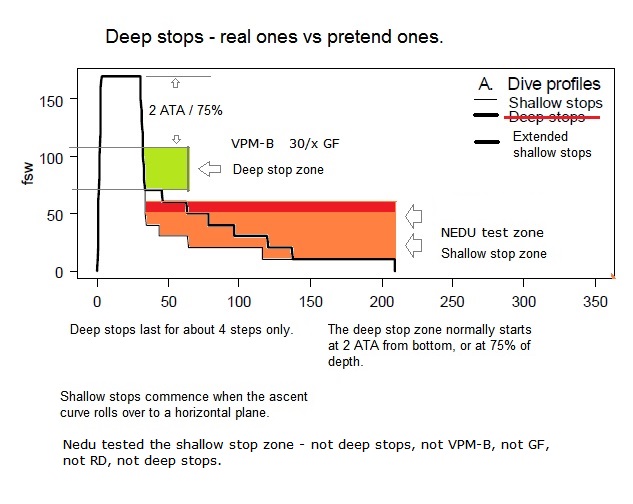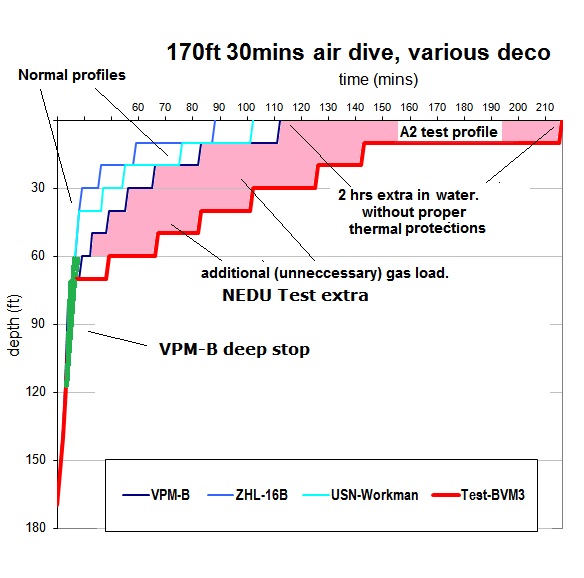Yes, quite a conundrum. No real profile stress present in either profile. Two varieties of shallows stops, I wonder what other kind of stress was elevated?
FACT - The nedu did not test tech level, VPM-B ,or other kind of deep stop.
FACT - The nedu tested two kinds of shallow stops.
Stop trying to con us into thinking otherwise!
We need not be concerned with "shallow model problems". No one here does these.
However the solution is already built into ZHL / VPM-B with the Haldane Schriener equations, and works just fine in both.
VPM-B is the Green part. Big pink part is the Nedu test. Not the same thing.







